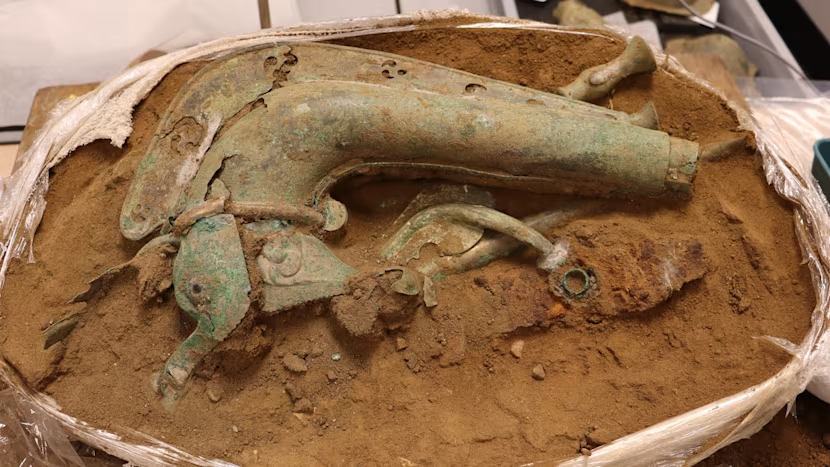The discovery of a flattened metal scrap at Historic St. Mary's City in Maryland has revealed an intriguing glimpse into the past: it was once part of a suit of armor worn by European colonists in the 17th century. Unearthed during excavations in a cellar at the site, the slightly concave piece of metal, about the size of a cafeteria tray, was initially mistaken for a small iron object protruding from the ground. However, as archaeologists continued their dig, the item revealed itself to be larger and more significant.
After thorough cleaning, researchers identified the metal scrap as a tasset, a component of a suit of armor designed to protect the wearer's thighs during battle. Confirmation came when X-ray images revealed the individual bands of steel affixed together, along with decorative rivets.
The discovery sheds light on the material culture and military equipment brought to the New World by European colonists in the mid-1600s. While the exact wearer of the armor remains unknown, it is believed that the tasset was discarded due to its impracticality in the hot and humid environment of Maryland. Unlike the breastplate, which offered vital protection for the core, the heavy and cumbersome tasset was likely deemed unnecessary for survival in the New World.
This finding is part of an ongoing archaeological project that began in 2021, focusing on excavating the cellar, which was used for storage and later became a repository for discarded items. Alongside the tasset, other artifacts such as 17th-century scissors, decorative metal braids, and the outline of a large building have been unearthed. Last year, the skeleton of a teenager, possibly an indentured servant, was also discovered at the site, adding to the rich tapestry of history preserved in the soil of Historic St. Mary's City.






